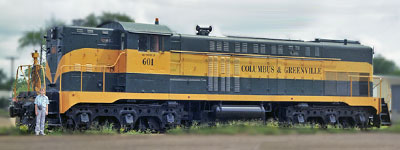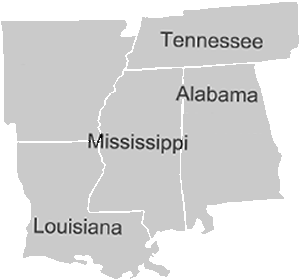





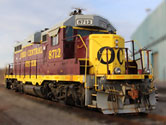
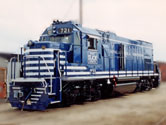

Louisiana Eastern
Paulsen Spence's Steam Sanctuary
The Louisiana Eastern Railroad was one man's vision for a major trunk line to bypass a congested New Orleans rail scene, but in fact that railroad never materialized beyond a small gravel pit operation and an eccentric collection of second-hand steam locomotives.

 After making his fortune on steam valve patents, Paulsen Spence returned to the South and began developing industrial railroad operations in the gravel-rich region of southeastern Louisiana.
Beginning in 1947 with the tiny Comite Southern, later in 1950 Spence purchased the nearby Gulf & Eastern Railroad and its related sand and gravel operations.
Throughout the 1950s, he purchased nearly three dozen recently retired steam locomotives in a variety of wheel arrangements and sizes, storing them on the Gulf & Eastern property -- which he renamed the Louisiana Eastern.
After making his fortune on steam valve patents, Paulsen Spence returned to the South and began developing industrial railroad operations in the gravel-rich region of southeastern Louisiana.
Beginning in 1947 with the tiny Comite Southern, later in 1950 Spence purchased the nearby Gulf & Eastern Railroad and its related sand and gravel operations.
Throughout the 1950s, he purchased nearly three dozen recently retired steam locomotives in a variety of wheel arrangements and sizes, storing them on the Gulf & Eastern property -- which he renamed the Louisiana Eastern.
In addition to using some of the locomotives to ferry gravel moves out to a mainline connection with the Illinois Central, railfans in the area grew fond of short tourist hauls operated on the weekends with one of the steamers. As noted, Spence had visions of developing much larger gravel operations in the area and even managing a through-line that would offer a freight bypass around New Orleans. However, the entrepreneur died suddenly in the fall of 1961, and with no one else to take on the daunting project of maintaining his impressive fleet of second-hand steam, most of the equipment was scrapped.
Only four Louisiana Eastern locomotives still exist today: at the Three Rivers Rambler Railroad, the Southeastern Railroad Museum, the Wilmington & Western Railroad, and the Lehigh Gorge Scenic Railway.
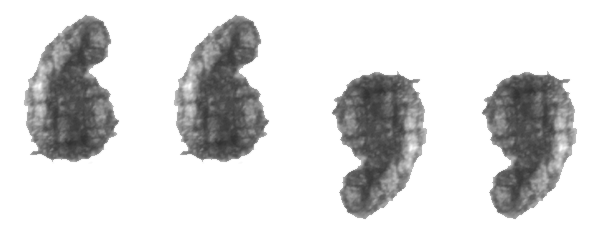
 At the end of World War II, Paulsen Spence was 50 years old and his patents had made him a very wealthy man. He is not known to have said how he developed an interest in railroading and steam locomotives. A year after his death a newspaper article quoted an unnamed acquaintance as saying, “Even when he was a boy, his mother used to always find him down by the railroad tracks.” True perhaps, but in part Spence's interest in steam locomotives appears to have been an outgrowth of his interest in the technology of steam power. Regardless of his motivations, with the decline of Spence's responsibilities after the war, there was time to pursue other interests.
At the end of World War II, Paulsen Spence was 50 years old and his patents had made him a very wealthy man. He is not known to have said how he developed an interest in railroading and steam locomotives. A year after his death a newspaper article quoted an unnamed acquaintance as saying, “Even when he was a boy, his mother used to always find him down by the railroad tracks.” True perhaps, but in part Spence's interest in steam locomotives appears to have been an outgrowth of his interest in the technology of steam power. Regardless of his motivations, with the decline of Spence's responsibilities after the war, there was time to pursue other interests.
Since his death, Spence has been called "innovative, brilliant, and eccentric." He accomplished great things in his lifetime and dreamed of greater. Perhaps Spence should be best remembered for his 1953 observation, "Few things in my life ever gave me more of a thrill than owning those engines."
Louis R. Saillard
HawkinsRails thanks fellow railfan Michael Palmieri for use of the C.W. Witbeck photos below from his collection

Steam Locomotives
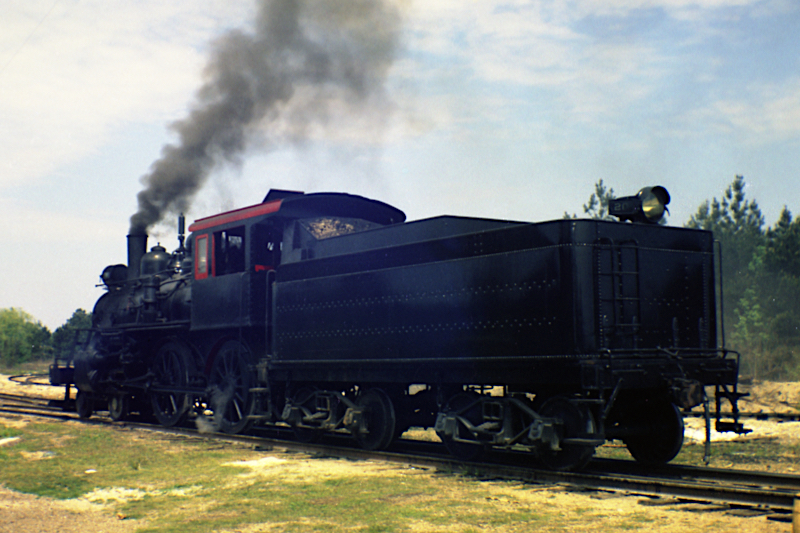
Louisiana Eastern #1
Shiloh, La / Apr 1958 / JCH


Louisiana Eastern #1
to Louisiana & Eastern #1, 1946
to Stone Mountain Scenic, 1961
to Southeastern Railroad Museum, 2008
named "General II"
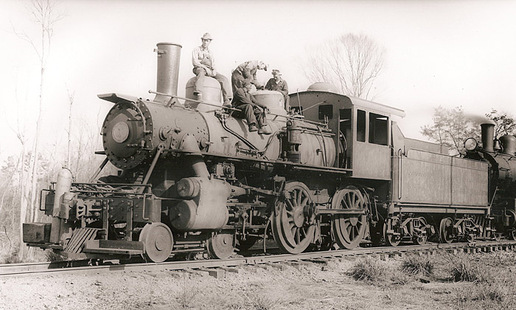
Shiloh, La / 1949 / Michael Palmieri collection

Shiloh, La / Michael Palmieri collection

In 1946 Spence discovered and purchased a jewel in the form of a 45-ton Baldwin 4-4-0, No. 104, stored on Louisiana's Red River & Gulf Railroad in almost new mechanical condition. Built for the RR&G in September of 1919 at a cost of $19,791.74, the locomotive had been stored at Long Leaf, La. since January 1, 1928, when passenger service declined. The No. 104 had last been used on the daily 50-mile passenger run from Long Leaf to Alco and Kurthwood, La, and RR&G Secretary R. D. Crowell claimed it had only five years of total service. It had been first retired in April of 1926 and then run only one more month, June of 1927. The railroad claimed the tires and running gear were virtually new. Missing a few gauges and valves, however, the locomotive was not operational.
Louis Saillard

Duluth, Ga / Nov 2020 / RWH

See also our complete Southeastern Railway Museum scrapbook for more Louisiana Eastern #1 photos

Nov 2020 / RWH
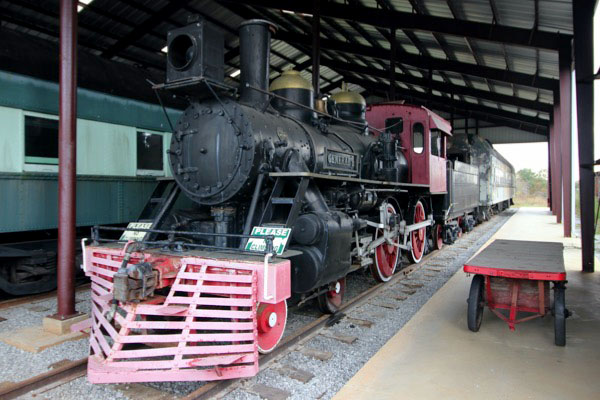
Duluth, Ga / Nov 2020 / RWH
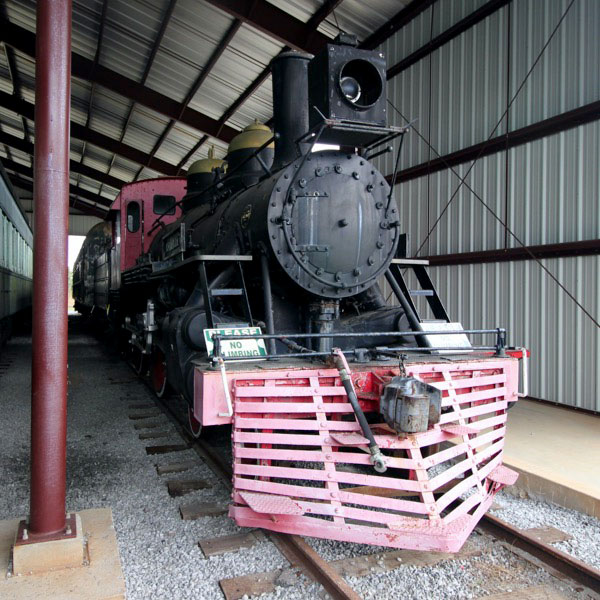
Duluth, Ga / Nov 2020 / RWH

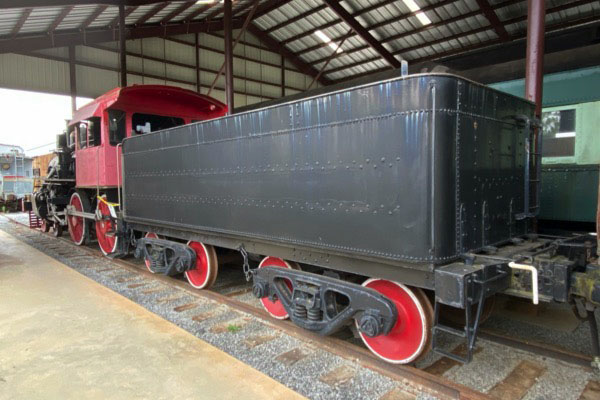
Duluth, Ga / Nov 2020 / RWH
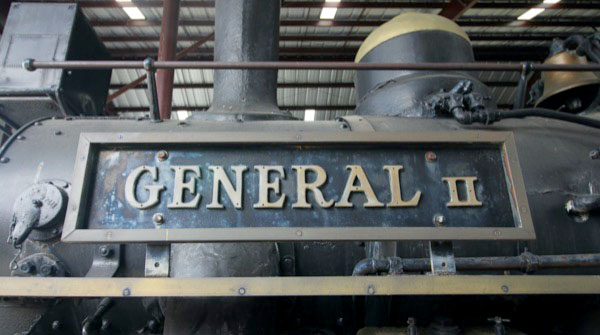
Nov 2020 / RWH

Nov 2020 / RWH

Duluth, Ga / Nov 2020 / RWH

Louisiana Eastern #2
Shiloh, La / Apr 1958 / JCH


Louisiana Eastern #2
to Southern Pacific #260
to Louisiana Eastern #2, 1954
to Stone Mountain Scenic #60, 1962
to Three Rivers Rambler
stored, out of service
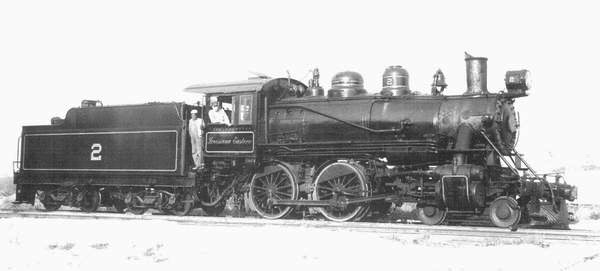
Shiloh, La / collection

collection

Southern Pacific #260
Gonzales, Tx / Oct 1950 / Friends of SAAP 60

Stone Mountain Scenic #60
Stone Mountain, Ga / collection

Knoxville, Tn / May 2015 / James Payne

See also our Louisiana, Texas & Pacific riding railroad scrapbook for more on Louisiana Eastern #2
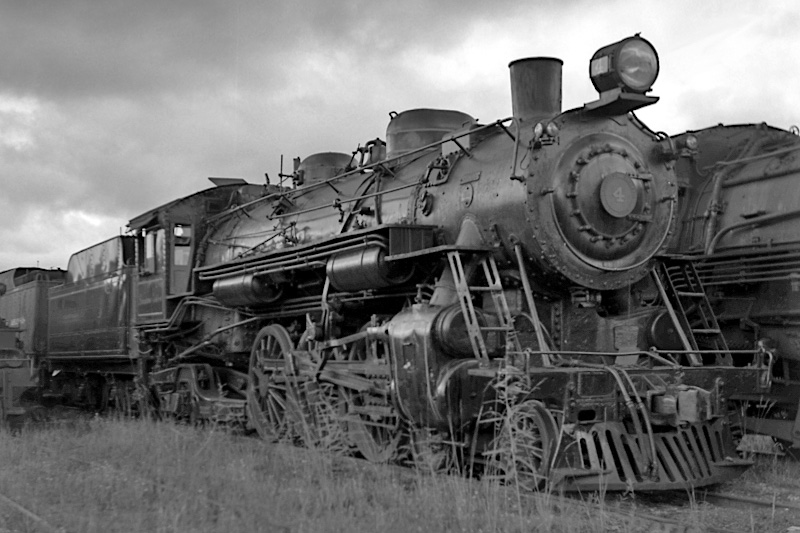
Louisiana Eastern #4
Shiloh, La / Apr 1958 / JCH


Louisiana Eastern #4
to Gulf Mobile & Ohio #580
to Louisiana Eastern #4, 1950
to Valley Forge Scenic #425
to Wilmington & Western #425
currently Reading & Northern #425

Gulf, Mobile & Northern #425
collection

Shiloh, La / JCH
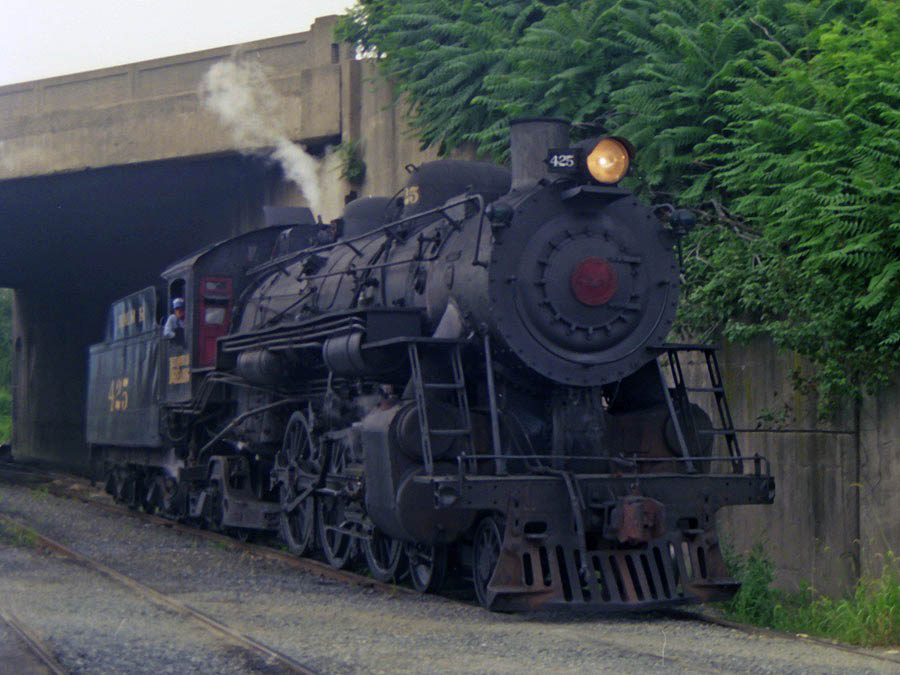
Hamburg, Pa / Aug 1989 / JCH
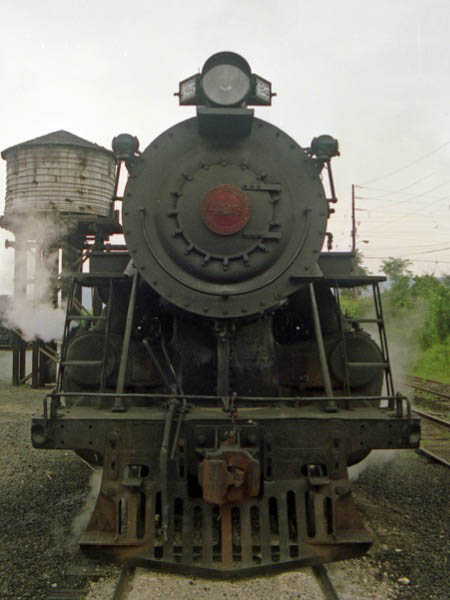
JCH

Hamburg, Pa / Aug 1989 / JCH

See also our Blue Mountain & Reading tourist scrapbook for more Louisiana Eastern #4 images
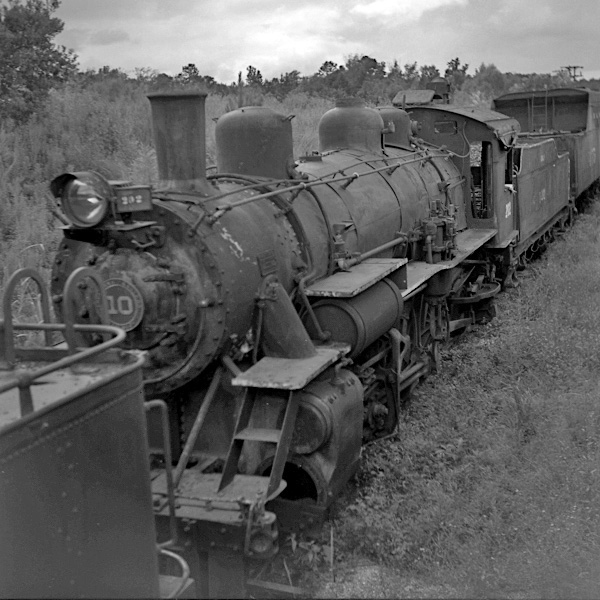
Louisiana Eastern #10
Shiloh, La / collection


Louisiana Eastern #10
to Louisiana & Arkansas #425
to Louisiana Eastern #10, 1948
scrapped, 1951
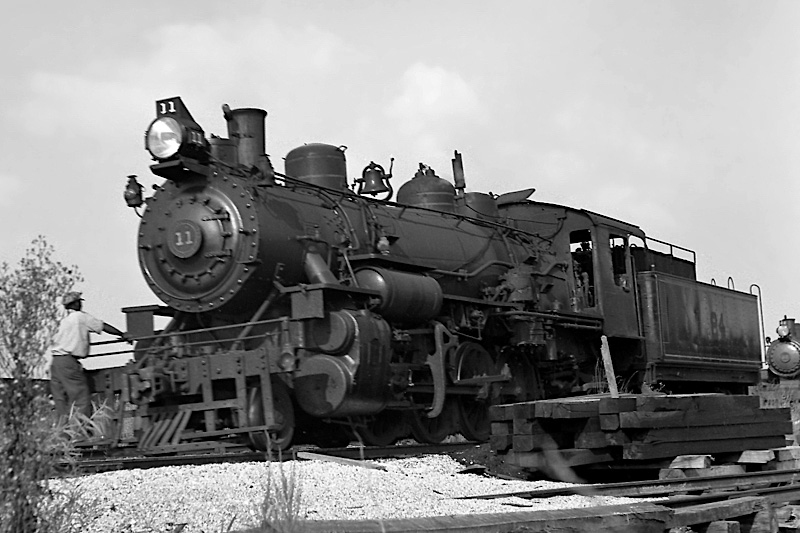
Louisiana Eastern #11
Shiloh, La / Apr 1958 / JCH


Louisiana Eastern #11
to Louisiana Eastern #11, 1954
scrapped 1963
last operating LE locomotive

Shiloh, La / Apr 1958 / JCH

Shiloh, La / Apr 1958 / JCH
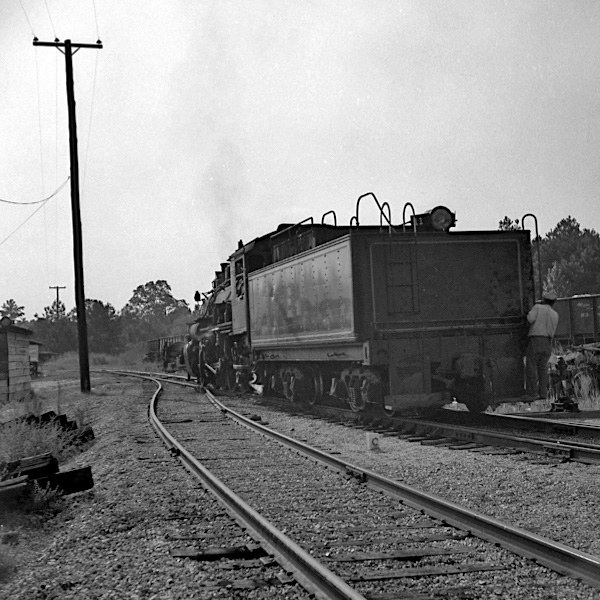
Shiloh, La / Apr 1958 / JCH
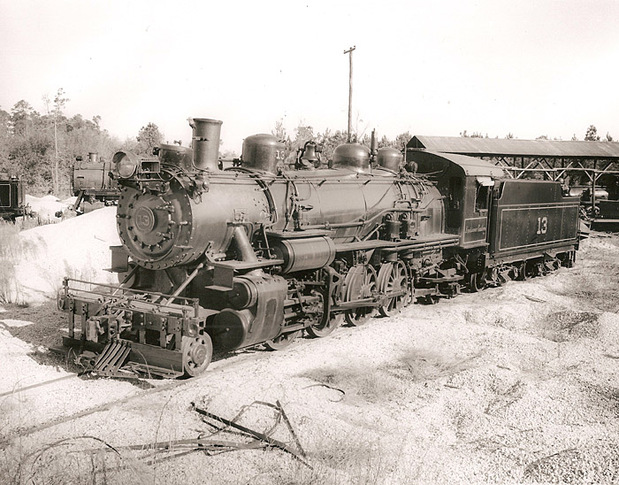
Louisiana Eastern #13
Shiloh, La / Oct 1956 / Michael Palmieri collection
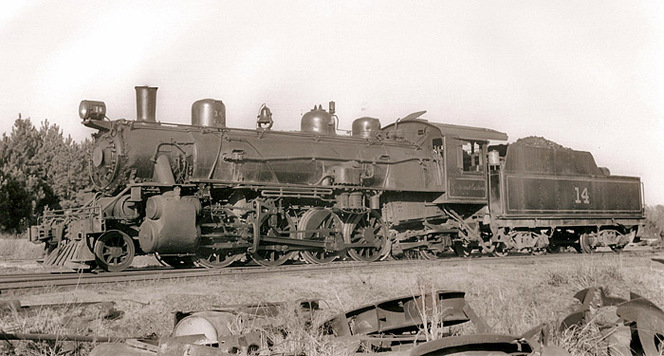
Louisiana Eastern #14
Shiloh, La / May 1957 / Michael Palmieri collection
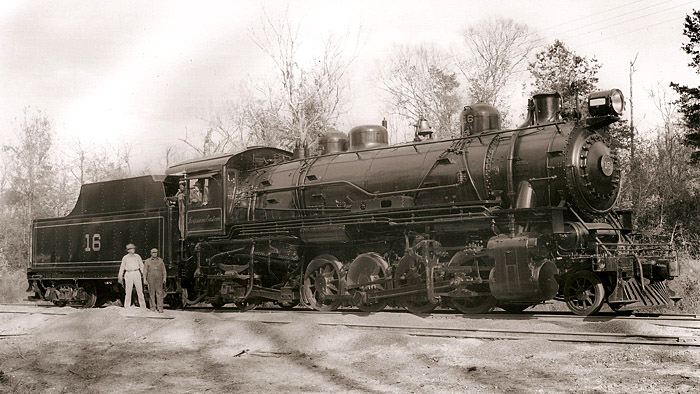
Louisiana Eastern #16
Shiloh, La / Nov 1954 / Michael Palmieri collection
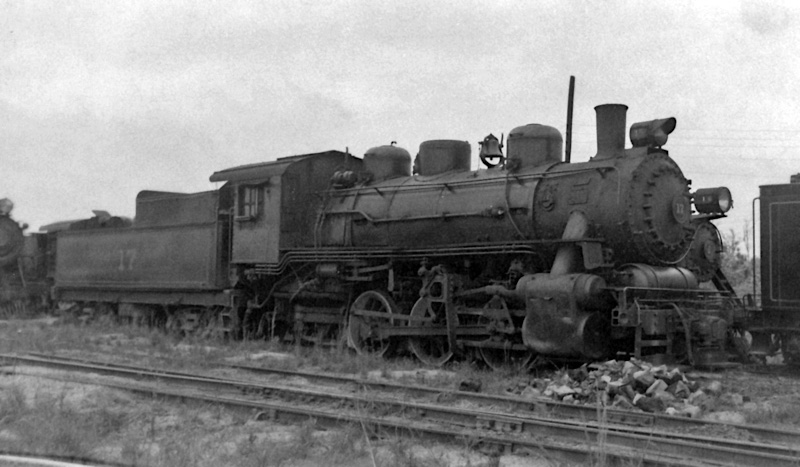
Louisiana Eastern #17
Shiloh, La / 1956 / collection


Louisiana Eastern #17
ex Gulf, Mobile & Ohio #45
to Louisiana Eastern #17, 1950
scrapped, 1962
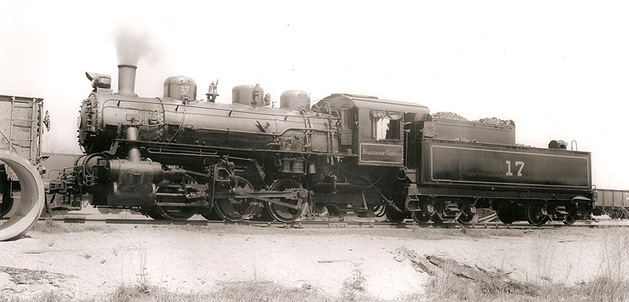
Shiloh, La / May 1955 / Michael Palmieri collection
Diesel Locomotives
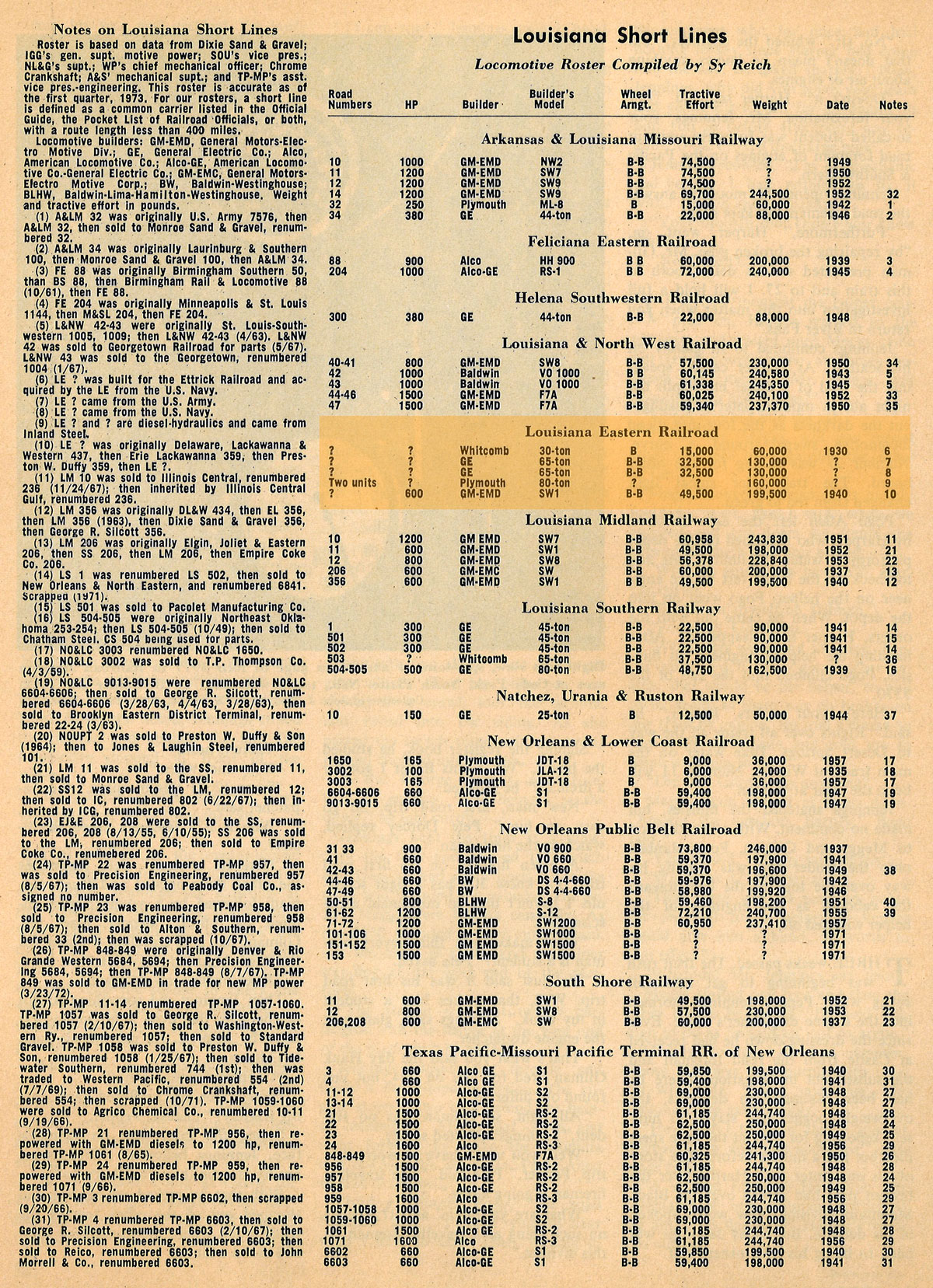
from Railroad magazine
- Sy Reich - Jul 1973 / collection
Rolling Stock

Another significant member of the Louisiana Eastern story arrived on the scene in 1958. Wilbur T. Golson was a 44 year old Captain in the Louisiana State Police, working on the state-wide police radio network. He had taken a few railroad photos with a 4x5 Graphic, but did not consider it a serious interest. After meeting Bill Witbeck in the unbelievable clutter of negatives, books, locomotive drawings and camera equipment that was Witbeck Studio, he was introduced to Paulsen Spence.
On his first visit to the Louisiana Eastern, Wilbur took a few photos of the operating engines and sent copies to Spence. Wilbur would recall that Spence liked the photos and told him, "If you need any engines moved for pictures, just do it yourself." A startled Golson replied, "Mr. Spence, I've never moved a locomotive in my life," and according to Wilbur, Spence said, "Well, now is the time to learn."
There was indeed a place for Wilbur in the LE scheme of things. On Sundays during the summer months, the Louisiana Eastern ran a free passenger train at 3:30 pm for railfans and invited guest, such as the Baton Rouge Boy Scouts. Wilbur later wrote, "This in turn led to a job and a new interest for me. I qualified for trainman, fireman and finally engineman, and became the engineer on the Sunday specials. The regular work-a-day trainmen did not like to spend their days off playing trains. The special became the retired railroad men's train, assisted by serious railfans who along with Paulsen enjoyed real steam power. During the weekdays, I gained experience hauling gravel with the switchers."
The Sunday specials generally consisted of one of the LE 4-4-0's along with a heavyweight Pullman "Rio Yaqui" and a former circus train observation car "Ernestine Rose" that Spence had acquired, although never painted or lettered. There were notable exceptions to this consist, however, such as on August 3, 1958 when the power was LE No. 15, a rare ex-Illinois Central oil burning 4-6-2 (ICRR No. 1180); one of only three owned by the ICRR. The Sunday specials incidentally, were scheduled to arrived at the ICRR interchange at Shiloh in time to salute the northbound Panama Limited with a whistle blast.
Louis Saillard
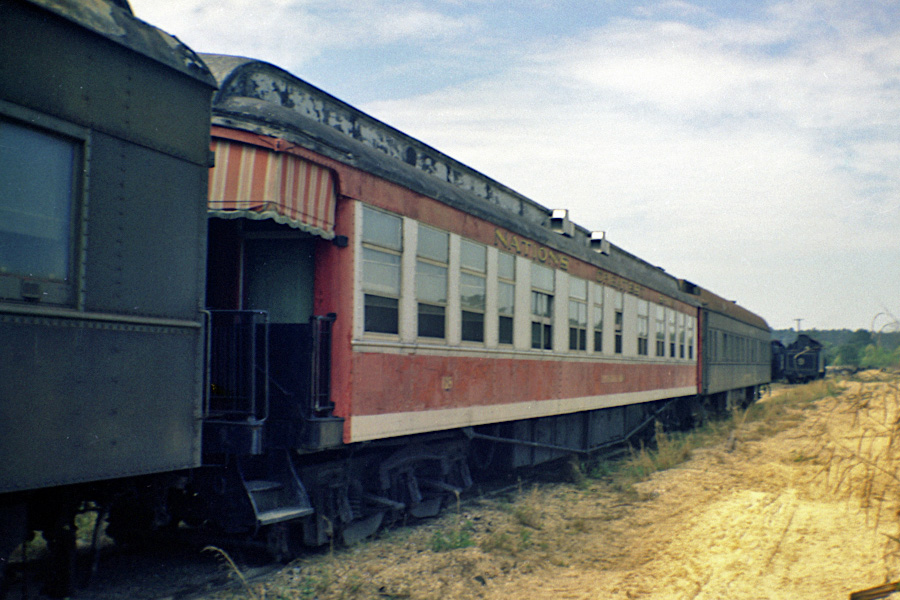
"Ernestine Rose"
ex-circus train observation / Shiloh, La / Apr 1958 / JCH
Lagniappe
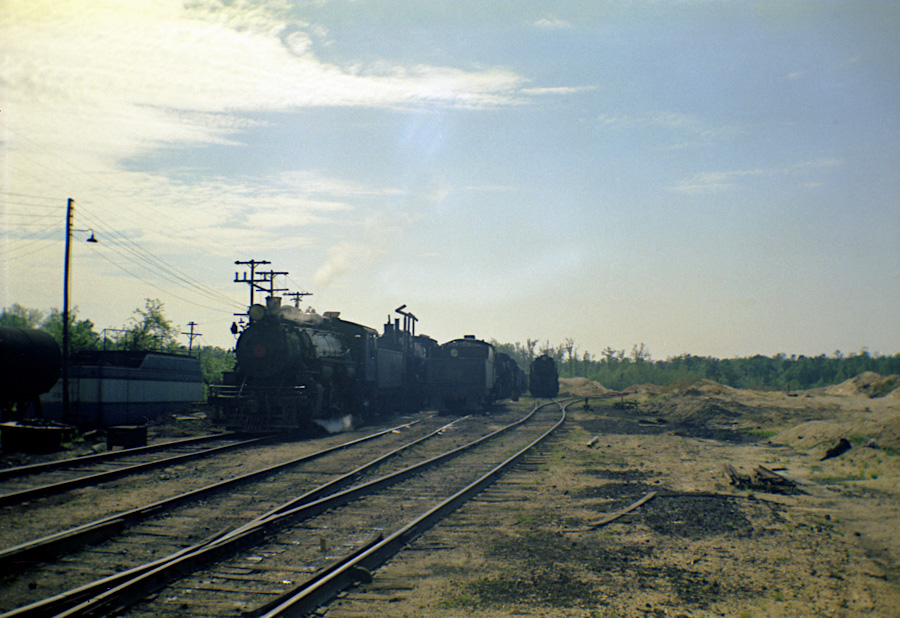
Sand Sisters
Shiloh, La / Apr 1958 / JCH
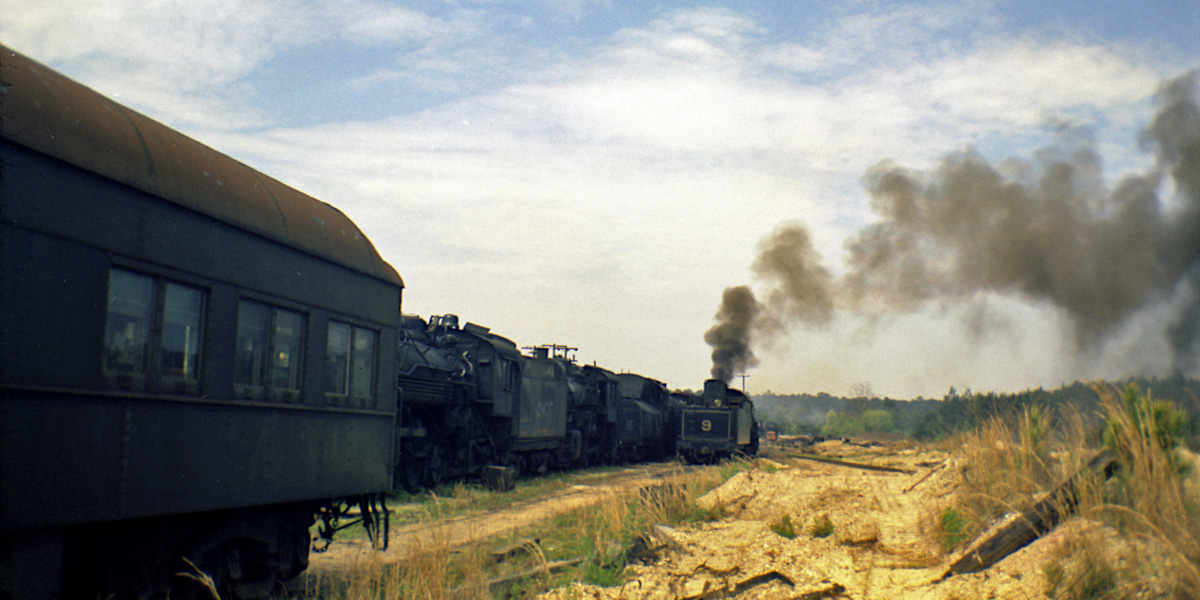
Smoking Sanctuary
Shiloh, La / Apr 1958 / JCH

Shiloh, La / Apr 1958 / JCH
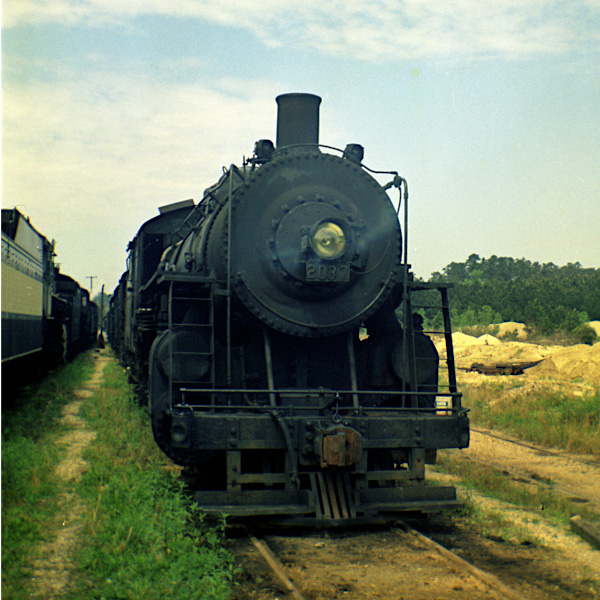
Shiloh, La / Apr 1958 / JCH

Shiloh, La / Apr 1958 / JCH
Links / Sources
- Louis R. Saillard, Paulsen Spence and the Louisiana Eastern Railroad. Railfan & Railroad - August 2009
- Meridian Speedway - Louisiana Eastern Story
- Meridian Speedway - Louisiana Eastern steam roster
- Wikipedia page for Louisiana Eastern collection
